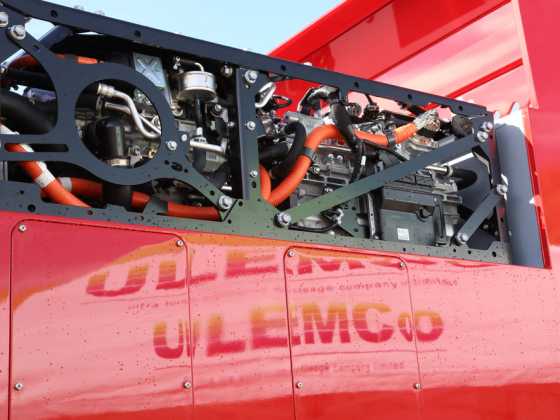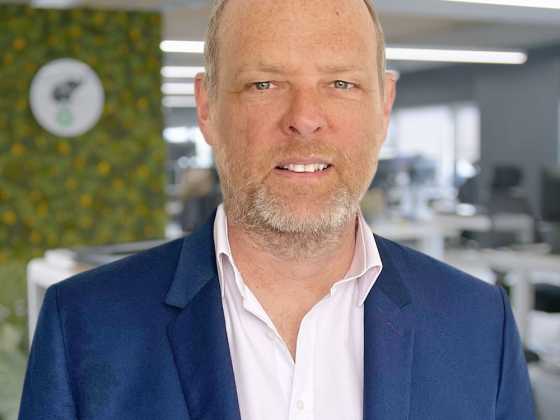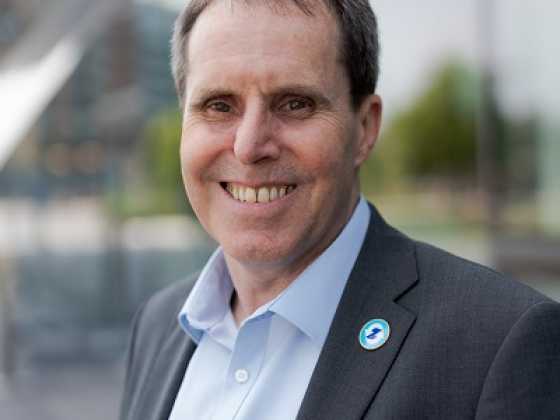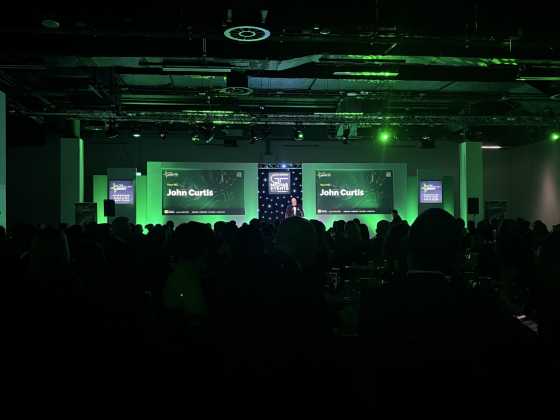Roundtable: The future of mobility & Connectivity
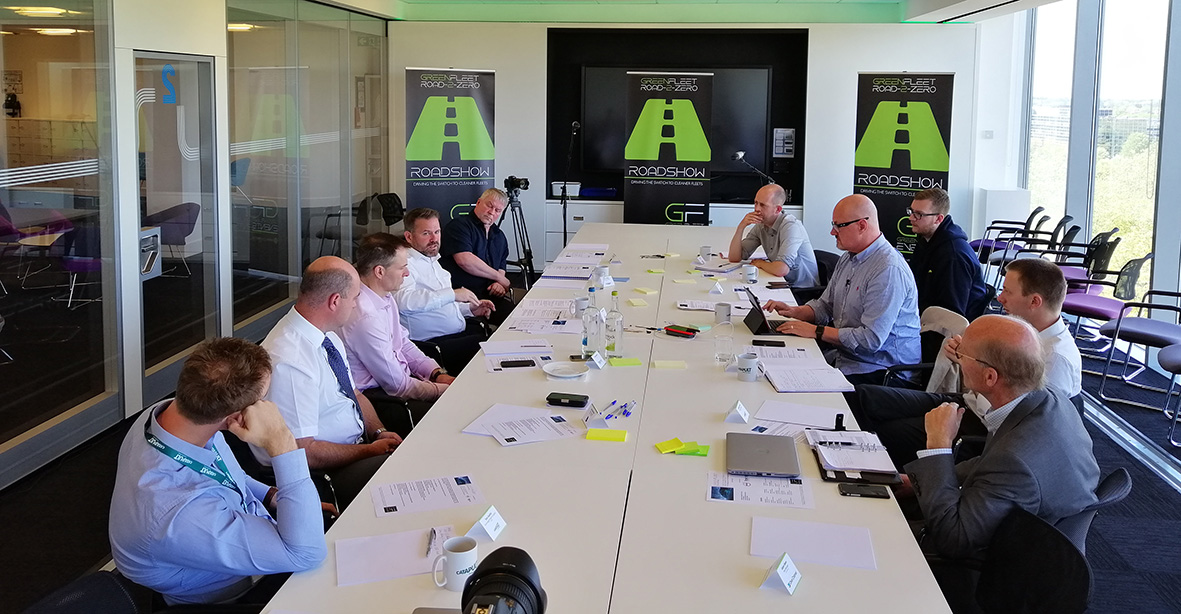
The quest for less congested roads and healthier air, as well as improved productivity, is driving the government and industry to look at alternative ways to travel and transport goods. The recent GreenFleet roundtable concluded that leadership, a clear strategy, investment, and incentives to change mindsets is key to making these changes work for both consumers and the business sector
At the recent GreenFleet roundtable on the future of mobility and connectivity, the collective opinion of delegates was that the road to flexible mobility solutions, facilitated through connected and autonomous systems, was worth the considerable effort of investment. The journey to better transport, less congestion and healthier air will be long and hard won, but the collected wisdom was that we must succeed.
The roundtable was held on 14 May at the Connected Places Catapult in Milton Keynes. It was attended by businesses, vehicle manufacturers, infrastructure experts and technology specialists, who explored the future landscape of transport. Will it be possible to break away from the reliance on vehicle ownership and embrace multi-modes of transport? Will disjointed modes of transport be unified to create a world where you can move around for a fixed or variable fee, bought as a service? It is a vision that is challenging both conceptually and in practice.
It was agreed that leadership, a clear strategy and investment are key to embedding the necessary behaviour changes.
Understanding business needs
As the old adage goes, knowledge is power, and one of the major challenges faced by any fleets operator is understanding exactly what their needs are to deliver the people and products required in a timely and efficient way.
Chris Evans from Trakm8 set out how route optimisation can play a part in helping fleet managers to understand and improve fleet performance. It enables managers to be able to increase vehicle utilisation and identify vehicles that are surplus to requirements, as well as reducing mileage by optimising routes, providing a typical cost saving of up to 30 per cent. The software can also help fleets identify which vehicles and routes are most suitable for switching to electric vehicles. Chris continued: “With route optimisation we can analyse data in order to improve vehicle utilisation, and introduce electric vehicles, whilst taking account of the loads carried, topography, and so on.”
Trakm8 also designs and manufactures a full suite of telematics products, which can provide vital data on vehicle status and driver performance, through deep connectivity with a vehicle’s CAN bus system. “Most vehicles have some form of telematics; but the data can be hard to access by third parties. This data is incredibly valuable to fleets, and we have several ways in which we can connect to vehicles to gather it. Generally we collect data via the OnBoard Diagnostic port.”
Chris Smith, fleet manager at Ringway Jacobs uses another telematics system, but such data can be readily used as a source, as Trakm8’s Insight telematics platform can utilise data from third parties as well as data gathered by its own telematics devices.
The commercial dilemma
The significant lack of technology, apart from Euro 6 compliant diesel engines, for heavy goods vehicles, was discussed around the table.
Andrew Green from the Connected Places Catapult believes that Euro 6 compliant engines are currently slowing the development of alternatively powered HGVs.
With barriers to entry high with enormous capital investment required, government support was felt to be necessary in order to encourage the use of hydrogen and CNG.
Refuelling infrastructure is key, yet it was felt that investment by government was tough to justify for things that may happen in three parliaments time.
Additionally businesses are managing expenditure carefully in a period of heightened business and political uncertainty.
Where possible hydrogen transport clusters are being established to provide a collaborative resource for multiple businesses, as with the increased range of hydrogen over electric, there is no need for fuelling stations everywhere. This approach can spread cost and risk.
Compressed Natural Gas (CNG) could be a solution but needs significant infrastructure, whilst only reducing emissions by half. Biofuels may also have a place in reducing emissions from HGVs but the volume of biomass is a limiting factor.
The road to low emission HGVs was felt to be amongst the hardest to achieve, worthwhile but a real challenge.
IKEA’s Marcus Helliwell added to the challenges by taking us back a step. Grid capacity continues to be a major issue. Whilst smaller vehicles, cars and light commercials can be bought, and charging infrastructure is available to buy, getting a grid connection of a sufficient size remains a limiting factor. In a number of locations IKEA have paid for an upgraded sub station which benefits other businesses who have not contributed and whilst the greater good is a positive for IKEA, other businesses may not sanction what is significant infrastructure investment.
IKEA has an aspiration to make all last mile deliveries by electric vehicle by 2025, which, whilst challenging, is going to deliver on their core sustainable business model.
Last mile logistics and solutions such as electric vans, cargo bikes, walking deliveries, coupled with shared centralised and local distribution centres are all part of a rich tapestry of changes required to decarbonise deliveries in city and town centres.
Electric future
Low emission and electric cars have become very much part of life for many, with up to 70 per cent of drivers now considering an electric car as their next vehicle.
Steve Beattie from Volvo said that many customers have accepted that they want an EV. Key to adoption is sufficient battery range to cover the customer’s needs, and a vehicle that’s not necessarily differentiated from other cars aesthetically. Manufacturers are responding with new products and technologies launched almost every week. Hybrid technology continues to be the way for many to start the journey.
Andrew Green from Catapult observed that from his research, “plug in hybrids cars have proved to be a company car winner with low benefits in kind tax but have had little effect on the majority of driver’s behaviour, with most miles still done on petrol or diesel.”
We returned to the issue of driver data as a way to influence behaviour change.
Data has a key role in developing successful commercial alternatives to vehicle ownership. The vehicle owner is the owner of any data and so the task seems to capture and share the data. The same is true of fleets who often resist sharing data outside of their organisation, for the greater good. As Andrew succinctly put it, the catapult do the “thinking and the linking” bringing the fleet owners and support functions together to support
data sharing and analysis.
Mixed fleet requirements
Gary Bowling from Babcock spoke about Heathrow and the challenges faced by operating the BA fleet. The fleet uses unique specialist vehicles, many of which are are large and made overseas. The vehicles do not do many miles but operate for many hours. Heathrow do operate many electric vehicles but prices are increasing and replacement of these vehicles can be after 15 years of service so replacement is not always a speedy option when looking to decarbonise or introduce new technologies.
Collaboration may be key to working in a more sustainable way. Vehicles at Heathrow are currently owned by separate airlines and not shared. A shared ownership model may reap rewards. However, It can be difficult to get collaboration to work across airlines with competing agendas.
Tom Gadsby outlined the challenges of shared ownership, experienced through the catapult operated “freight share lab”. Difficulties have emerged in apportioning savings, sharing insurance cover, and having different business models across participants. Finding a way forward across companies is difficult and for many, with competing demands, can prove almost impossible.
Chris Rimmer from Cenex noted that car clubs and e-car clubs are now available but shared ownership is far from truly embedded in most domestic or business users.
Tom went on to suggest that appropriate legislation is key to overcoming the challenges of reducing emissions and having a better environment. If government, for instance, mandated that every vehicle needed telematics, an immediate effect would be seen in reducing emissions. Government can and should act to provide certainty and set challenging targets, coupled with the necessary incentives and financial support.
Marcus Helliwell from IKEA pointed out that Client Earth, amongst others, are holding the government to account over poor air quality and this will continue to drive new legislation and provide the certainty necessary to secure investment for major infrastructure projects.
The younger generation
Andrew Green from Catapult has observed the phenomenon of young millennials not owning cars, and forecasts that shared ownership is a natural development.
Taxis and ride hire companies like Uber have become a way of life, rather than the luxury they used to be.
This shift to shared ownership is what has influenced car manufacturers to look more holistically at mobility or movement as a service.
We are clearly a long way from achieving or, some might say, truly starting the transition to zero emission cities and there appears to be a lack of strategy about how we really achieve this, beyond vision and warm words.
It was agreed that leadership and investment are key to embedding the necessary behaviour changes.
Central to reducing transport emissions is behaviour change; getting people who have a job to do, to do something different, in the knowledge that the positives will outweigh any initial negatives.
Future of mobility
Autonomous and connected vehicles will enable people to reclaim time they currently waste travelling, as well as make things more efficient for the driver, such as pre-warmed or cooled vehicles, or a satnav already programmed from diary commitments. Volvo will be making such technologies available from the early 2020s.
Reliability is key to mobility as well as removing the hassle out of modal connections. But as Chris Rimmer posited, the increasing personalisation of travel could lead to increasing isolation?
Chris Evans from Trakm8 summed the day up succinctly when he said “there is no one single simple solution. It is only by really understanding your business that you can be sure of making informed choices and equipping your business for what will, undoubtedly, be an ever-changing transport landscape.”

